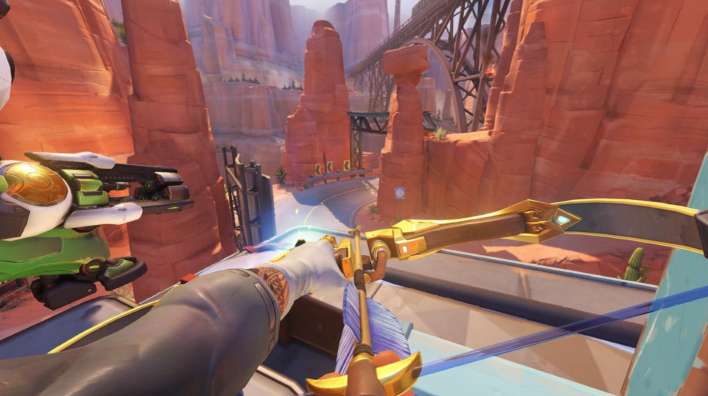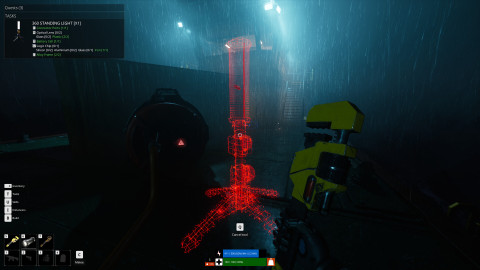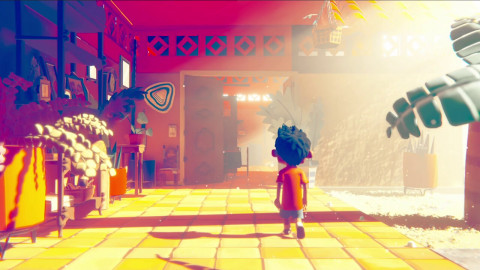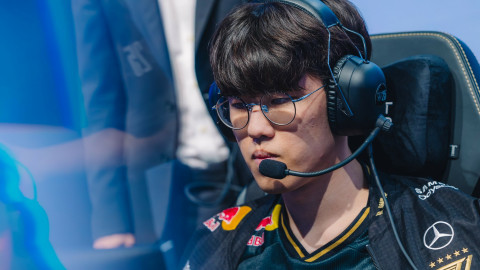
In my last guide, we talked about the importance of good positioning and three questions you should be asking yourself during a game to make sure that you are positioned well. Creating space depends heavily on your understanding of effective range, so make sure you give that article a look first for an explanation of effective range.
Now that you’re up to speed with effective range and positioning, it’s time to talk about how to use tanks (and flankers) to create space for your team. Imagine you’re in a match, grouped up with your team opposing the enemy who is also grouped together. The heroes on each side have their own effective ranges, so you can expect that some of them will be able to attack you (say a Soldier, for example) while others are a little stuck unless you get closer (like Reaper). When we say create space, what we really mean is to reduce the effective range of the enemy team, so that our team can move forward into the safe area we’ve opened up. We’re going to demonstrate this effect using three different examples—one for shield tanks, one for divers, and one for flankers.
For this example, we’ll use Reinhardt, playing Attack on Volskaya Industries. Naturally, as a tank, you want to be at the front of your team, using your shield to block enemy damage. Volskaya is a map that is well known for the choke before the first point, and that means you have a big responsibility to protect your team and help them get through that initial choke point. How are you going to do that? By creating space in the simplest way possible—walking forwards! Heroes on the enemy team, DPS characters, in particular, will all be able to fire upon your team once you reach the choke point on Volskaya. That’s why you have the shield: because you can block that damage.
In addition to blocking damage, you’re also reducing the effective range of those heroes, because they can’t fire through your shield. As long as your teammates remain behind the shield, they are outside the effective range of the enemy team; remember it’s effective range, not max range. By moving forward, you reduce that effective range further, and the distance you cover on the map is space that you have created for your team. They can also safely move forwards, inching closer to the choke point, because you have created space for them to do so.

That is pretty much all there is to it when it comes to creating space with Reinhardt or other shield tanks. While ordinarily being caught in the choke point would mean instant death, Reinhardt can march his team through by reducing the effective range of the enemy team and creating space for his team in the process. To get into the habit of taking advantage of this, make sure that the enemy team never damages your shield without you gaining ground from it. Get as much value out of it as possible, and ensure that your teammates stay behind you. 
The next section is going to be focused on using tanky divers like Winston or D.VA to create space for your team. This can be pretty intimidating for a lot of players because it puts you in an extremely dangerous situation where you need to rely on your team’s help to survive. However, if you pull it off correctly, you’ll be able to quickly isolate key targets and allow your team to overrun the enemy.
RELATED: AMA with Mano, the Winston specialist of the OWWC South Korean team
As we pointed out with the previous example, creating space is really about reducing the effective range of the enemy team so that your allies can move forward. With shield tanks like Reinhardt, this is a slow process; you are only moving a very small distance at a time. That means you ideally need strong hitscan players on the ground with you to apply pressure to the enemy team, allowing you to keep your shield up and keep moving forward.
With diving tanks like Winston, you apply that pressure directly. By charging into the enemy backline, you encourage them to collapse on you. Although that’s obviously a precarious position to be in, as long as your team takes advantage of that instant to move up the map (whether they are dishing out damaging or supporting you), you’ll have created a ton of space to give them the advantage in the resulting fight.

One of my favorite examples of this is the first point on Route 66, where the defending team will typically plant themselves on top of the gas station. Being a payload map, the attacking side cannot have all six players moving through one of the three flank routes, as otherwise, they will make no progress towards the checkpoint with the payload. This means most of the attacking team is going to be moving around the corner into a choke point, where the defending team can pile the damage on from the high ground, usually from behind the safety of a shield.
In this situation, it’s entirely possible that you could use your own shield tank to escort the payload around the corner, but this strategy hinges on the defending team not putting out sufficient damage to destroy the shield. This makes diving a more suitable strategy—there’s less time for the defenders to dish out damage before you take the fight to them.
By using Winston or D.VA to jump onto the gas station, you allow your teammates to swing around the choke point and access their own high ground. You can occasionally even force the defending team away from the roof, right into the clutches of your hungry DPS players. By utilizing a dive strategy, you have removed the choke point advantage held by the enemy team, and you have created space for your team to fight back.

By forcing the defending team to deal with your divers, you reduce their effective range and ability to focus their fire on the choke point. If you are ever faced with a choke point and don’t have the time to march a shield tank through to cover your team, consider switching to a dive composition and take a more proactive role in determining future fights. 
Creating space isn’t a tank-exclusive phenomenon; any player that applies significant pressure to the enemy team is capable of creating space for their team. Although flankers often accompany the diving tanks into the enemy backline, they aren’t generally capable of doing so by themselves thanks to their low health pools. That means to create space for your team, you need to either find an isolated target or apply pressure in a way that doesn’t involve taking any damage.
It’s much easier to create space with a flanker on 2CP maps like Volskaya Industries or Hanamura, but it’s doable on King of the Hill and Assault maps as long as the point/payload is behind enemy lines. We’ll use Hanamura for our example this time. Once again, assume the role of the attacking side, trying to break through the choke point to reach the first capture point. It’s one of the trickier choke points to navigate, especially when the defending team is using multiple shields or defense heroes like Mei and Torbjorn. However, their dedication to holding that first choke point is also their most exploitable weakness, and you can dismantle their hold on the choke using a single flanker Genji, for example.
If you make your way through the window on the left, you can quickly wrap around the left side or head over the pavilion to reach the point without being exposed for long. By sitting on the point, you become an immediate threat that the enemy team must respond to. As flankers are typically good duellists, the enemy team will need to dedicate two, or perhaps even three players to the cause. That’s two or three fewer players holding the choke point, and an easy fight win for the rest of your team. Coordinate with your team, head to the point, let them know when you have attracted enough attention and then focus on staying alive while they steamroll through the choke point.

Conclusion
If you are playing a tank or flanker and your team is struggling to make any headway on the map, look to see how you can either reduce the effective range of the enemy team or apply pressure that will weaken their defense. As long as you are communicating your intentions with your team, you’ll be able to give them a time window in which they can build momentum and force their way forward. This is what it means to create space, and it will help you take your tank or flanker play to the next level.
Sort by:
Comments :0






